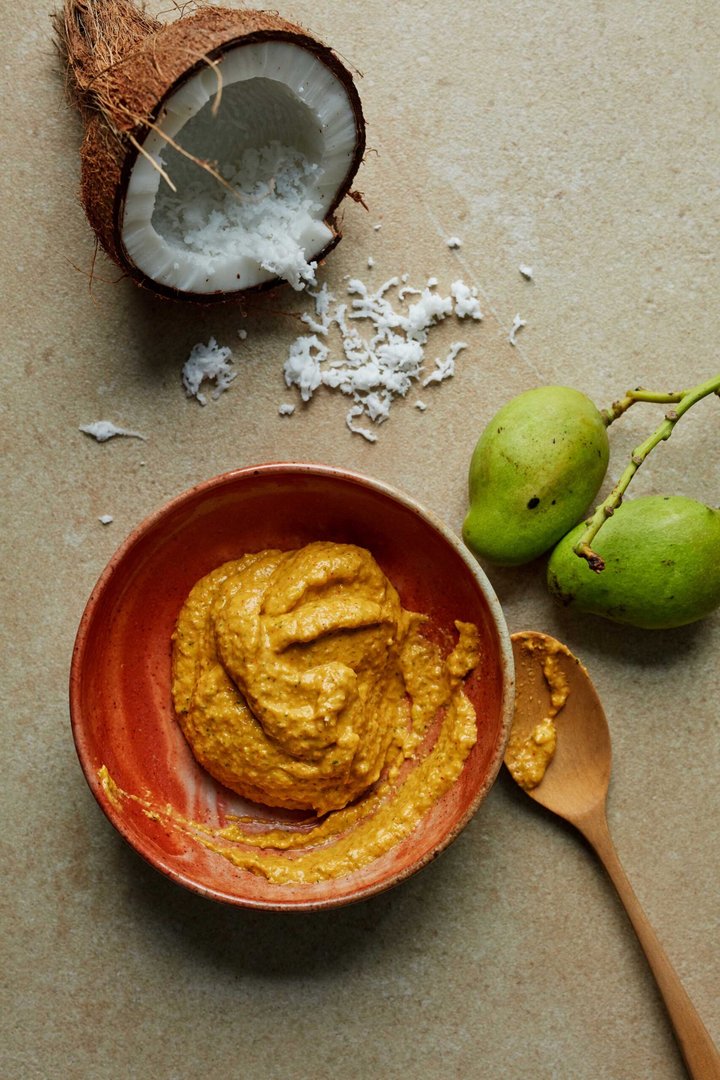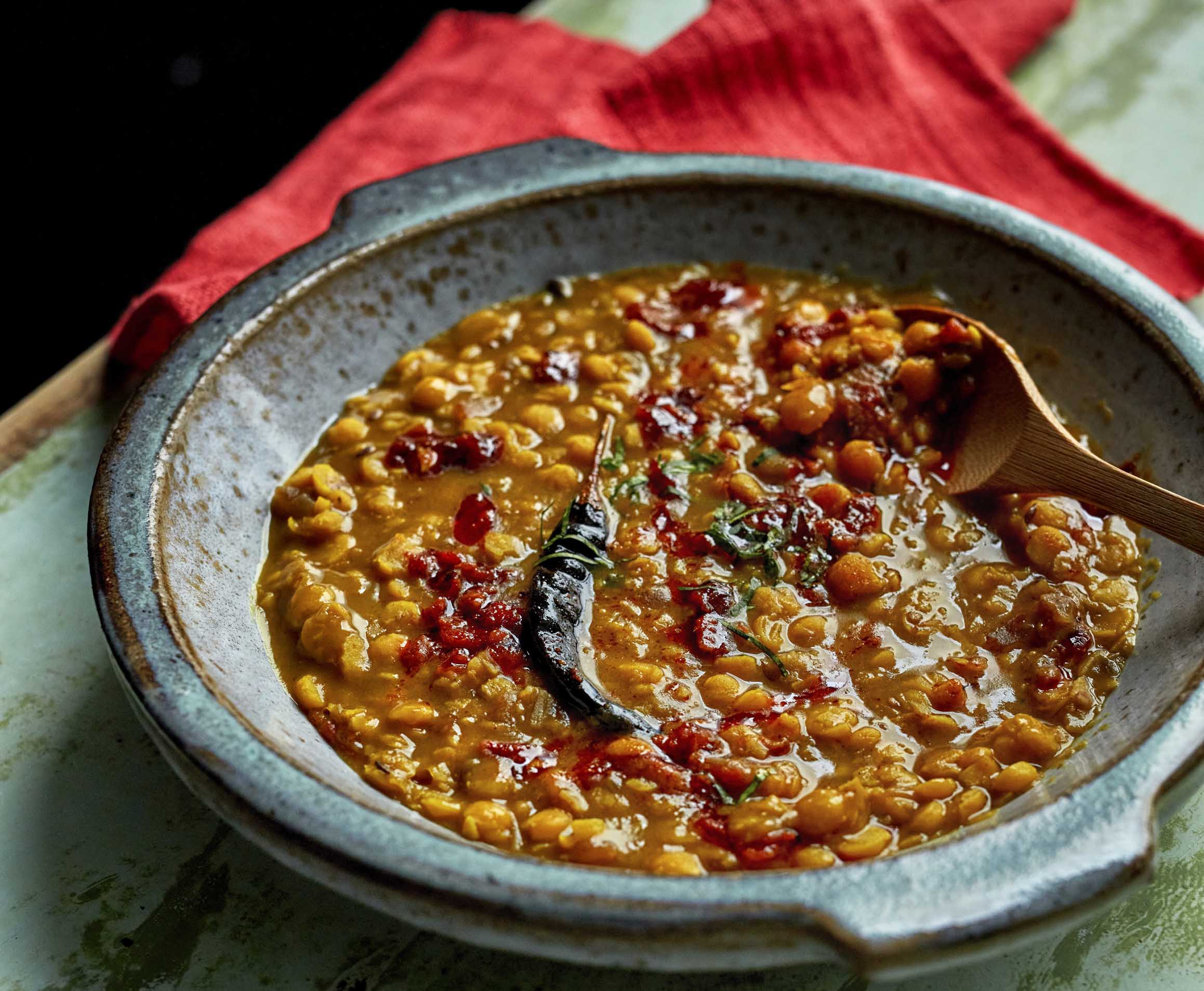By Lauren Taylor
For many viewers, it was Santosh Shah who first introduced them to fine dining Nepalese food on MasterChef: The Professionals 2020. But, despite being from Nepal, he had only recently discovered the food of his home country himself.
Having left his village of Karjanha and family at just 14 to move to India and work as a kitchen porter, he progressed to chef, and Indian food was what he cooked – and what he knew – for 20 years.
“Before I was calling [myself] an Indian chef,” Shah says. “What do you cook? Indian food. Where do you work? Indian restaurants. What kind of chef are you? I’m an Indian chef.”
But before his stint on BBC’s MasterChef, he started to research the cooking techniques and produce of Nepal, and the experience has been a real homecoming to the food he once cooked with his mother as a child.
“I was so amazed with the cooking and food we have… from the fermentation to pickling, the dumplings, the bread, high-altitude food, low-altitude food, fire cooking, lots of meat, lots of fish,” he says. “I’m thinking, why didn’t I do this before?
“Now – everything Nepali. I’m a Nepali chef. What do you cook? Nepalese food.”
He’s on a mission to “contribute Nepalese food to the world” via his debut cookbook, Ayla.
There’s a misunderstanding, he says, that Nepalese food is very similar to Indian, which borders three sides of the country. Of course, some influence does come from its neighbours, which also include China, Pakistan, Burma and Bhutan, Shah explains. But the secret is really in Nepal’s unique geography and biodiversity.
But whether it’s street food (“a way of life in Nepal”) like steamed chicken mo mo dumplings or festival specialities like syrupy pancakes with saffron creamy milk, you can be sure of the sophisticated use of spices.
And while his book celebrates the wild boar, buffalo meat and jungle fowl that’s so crucial to Nepali cuisine, they can all be substituted for easier-to-source meats, he says.
Spicy chickpeas
Serves 4
280g chana dal (split Bengal gram)
½tsp ground turmeric
2–3 whole fresh green chillies, tailed and slit lengthways
3–4 cloves
2.5cm piece of cinnamon stick
2–3 green cardamoms, lightly crushed
2 tejpaat (Nepali bay leaves)
1tsp salt
1tbsp fresh coriander leaves, chopped
For the tempering
2tbsp ghee or vegetable oil
2–3 dried red chillies, depending on size or to taste
1tsp cumin seeds
2 red onions, finely chopped
15g fresh ginger, peeled and finely chopped
1 tomato, chopped
1tsp sakahar barha masala (vegetable garam masala, see below)
For the Sakahar barha masala
For the whole spices
1tbsp dried garlic flakes
5 dried red chillies, crushed
2tsp cumin seeds
2tbsp coriander seeds
1¼tsp black mustard seeds
1tsp fenugreek seeds
1tsp timmur peppercorns, or Sichuan peppercorns
2tsp black peppercorns
4 black cardamoms
5 tejpaat (Nepali bay leaves), crushed
For the ground spices
1tbsp ground ginger
1tsp turmeric
1tsp hing (asafoetida)
To serve
Bhat (plain rice)
Puri (fried puffed bread)
Make the Sakahar barha masala: Heat a non-stick frying pan. Add all the whole spices and dry roast over a medium heat until they colour, puff up and start releasing their aroma. Transfer to a plate and leave to cool. Using a spice grinder or coffee grinder, grind the toasted and cooled whole spices in batches until finely powdered. Mix in the ground spices until well blended. Transfer to a screw top jar or other airtight container. For best results, use any leftover spice mix within two weeks.
Wash the chana dal under running water and soak them for 30–60 minutes in lukewarm water.
In a medium heavy-based saucepan, combine the drained chana dal, turmeric, fresh green chillies, whole spices and salt. Cover with 1.4 litres of water and bring to the boil.
Lower the heat and simmer, uncovered, for 45–60 minutes, until the dal is cooked through, and the liquid has reduced. Drain half of the dal and place in a blender with some of the cooking liquid. Process to a purée and pour back into the pan. Stir until well blended. The dal should have the consistency of a thick soup. Keep the dal hot.
Make the tempering. Heat the ghee or oil in a non-stick frying pan, add the dried red chillies and cumin seeds.
When the seeds start to crackle, add the onions and cook for 12–15 minutes, stirring occasionally, until caramelised. Stir in the ginger and tomato. Cook for two minutes, until the tomato is soft. Add the vegetable garam masala, stir well and leave to simmer for 30 seconds.
Pour the whole tempering mixture into the simmering dal, add the chopped coriander and stir until well mixed. Simmer for three to four minutes, to allow the flavours to infuse.
Check and adjust the seasoning to taste, adding more salt if needed, and serve hot with rice and puri.

Santosh Shah’s green mango and coconut chutney. Matt Russell/PA.
Green Mango and Coconut Chutney
4-6 servings
4 small green mangoes
½tsp salt
½tsp Kashmiri chilli powder or medium hot chilli powder
4 garlic cloves, chopped
15g fresh ginger, peeled and chopped
50g grated fresh or frozen coconut
1tbsp caster sugar
1tbsp lemon juice
1tbsp fresh coriander leaves
2tbsp vegetable oil
Peel and stone the mangoes and cut the flesh into a small dice. Crush the mango pieces and salt in a large pestle and mortar to break them up. Add the rest of the ingredients and crush into a paste. Alternatively, place the mango pieces and salt in a food processor and pulse a few times, until slightly crushed. Add the rest of the ingredients and process to a coarse paste.
Check and adjust the seasoning, adding more salt, sugar or lemon juice, to taste. Stored in an airtight container and refrigerated, this will keep for three to four days.
Ayla: A Feast Of Nepali Dishes From Terai, Hills And The Himalayas by Santosh Shah is available now







Click here to change your cookie preferences